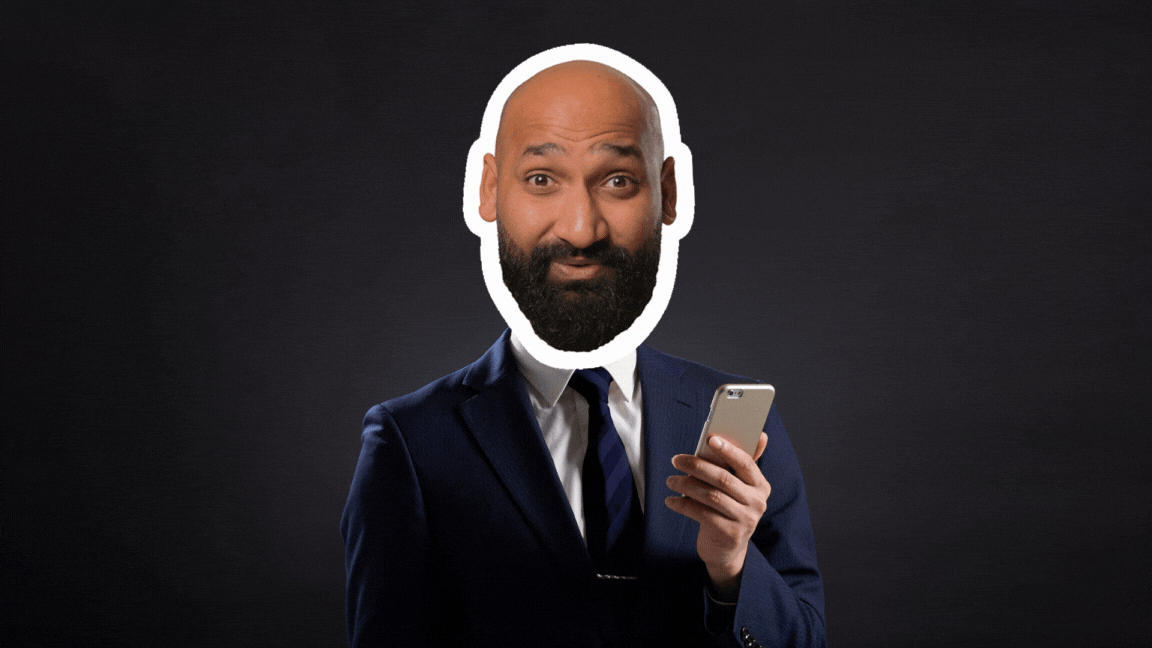Personal branding is a strategic game; it is not a beauty contest. If you construct only a flashy persona, you instantly sacrifice authenticity and credibility. Every single line of your brand narrative must definitively earn its place. As Brand Professor expert correctly warns, "confused people don’t follow, hire, or recommend." A stray image, a mixed message, or a neglected professional network can rapidly erode years of hard-earned credibility. You must proactively avoid these classic blunders to keep your brand sharp, highly trusted, and at the top of the leader board. Let us break them down.
1. Faking It: A Brand Built on Inauthenticity
Have you ever meticulously polished your online profile to professional perfection, only to feel a sense of hollowness? Presenting a highly polished persona instead of your true, complex self is the fastest possible route to losing audience trust. Audiences can sniff out fake personas instantly. You may believe you are impressing people, but they are actually tuning out a misaligned and unbelievable image. Once that essential trust is gone, you have absolutely nothing left to sell, not even to yourself.
How to Avoid It: Embrace Radical Authenticity
- Reflect on your core values and commit to sharing the real, unvarnished story of who you are. Do not merely broadcast wins; publicly admit lessons learned from failures.
- Align your words and actions so tightly that there is no perceivable gap between your stated brand message and your real-life professional conduct.
- Craft messages that genuinely reflect you, not a copied template of someone else’s professional success. If you sound generic, you "remain in the herd," but intentional clarity makes you a brand, not just another business.
- Treat authenticity as your number one strategy: everything else must flow naturally from this foundation.
2. Mixed Signals: Inconsistency and Confusion
Effective brand strategy absolutely demands consistency. If your message, tone, and visuals are scattered, people will either get the wrong idea or, worse, no clear idea. All savvy Personal Branding Experts will confirm: the goal is one voice and one compelling vision. When your LinkedIn profile communicates one narrative and your company's Twitter account communicates another, you have severely fractured your own professional image. As Entrepreneur magazine notes, "If your messaging and visuals are all over the place, you risk confusing and alienating your audience." That immediate inconsistency makes your brand fundamentally forgettable.
How to Avoid It: Architect Cohesion
- Develop a clear, concise brand guide that explicitly defines your voice, visual preferences, and central story.
- Audit every professional touchpoint, from your website and LinkedIn profile to your email signature, to ensure they consistently tell the exact same story.
- Tailor content appropriately to each platform, but never contradict your central, established narrative. In short, all your communications must march in perfect formation.
- Decide on a single, strong value proposition and repeat it consistently across all channels so people remember you, rather than become puzzled by your variety.
3. Trying to Please Everyone: No Niche, No Notoriety
When you fail to define a specific niche, your entire brand evaporates immediately into the professional noise. A scattershot brand that attempts to be everything to everyone ultimately ends up serving no one effectively. A startup that markets itself as helping "any business that needs help" appears generic, not strategic. This lack of focus is fatal; the unfocused brand simply fades away. In the age of sophisticated algorithms, niche clarity is not optional; it is a matter of professional survival.
How to Avoid It: Define Your Niche
- Choose a specific, narrow audience and speak directly and exclusively to their acute needs.
- Articulate what makes you uniquely valuable, your Unique Selling Proposition (USP), and relentlessly lean into it.
- Do not dilute your message with irrelevant or generalized topics. A targeted brand is a fundamentally memorable brand.
- Embrace specialization: In business strategist terms, deep expertise consistently trumps broad generalism. Being the absolute best in one field is far more powerful than being merely average at many.
- List the exact, specific problems you solve and the precise people you are positioned to serve.
4. Ghost Mode: Passive Online Presence
Building a powerful personal brand is fundamentally about building active professional relationships. You cannot simply "set it and forget it" online. A silent profile is professionally equivalent to having no profile at all. In fact, outdated or empty social accounts signal to the market that you are not serious or currently active in your craft. Furthermore, platforms like LinkedIn actively punish inactivity: your posts vanish in the algorithm and your profile drops off professional feeds. Since approximately 85% of jobs and deals originate through networking, every missed interaction is a substantial missed opportunity.
How to Avoid It: Engage Strategically
- Optimize your LinkedIn and website with complete, professional information (a keyword-rich headline, current photo, and detailed summary) so you consistently appear in relevant searches.
- Post regularly, articles, insights, and case studies that actively demonstrate your specific expertise.
- Be genuinely social: Comment thoughtfully on peers’ posts, provide helpful answers to questions, and graciously acknowledge all compliments. Failing to engage sends the damaging message that you do not care about your industry.
- Spend focused time each week adding thoughtful, insightful comments and messages on LinkedIn and within industry forums.
- Remember this truth: Relationships build brands. Investing consistent time in people yields loyalty, valuable referrals, and, critically, new business.
5. All About Me Syndrome: Endless Self Promotion
Your audience is not watching Netflix solely for your personal advertisements. If every single update is merely a boast or an unsolicited sales pitch, people will immediately tune out. As The Branding Corner bluntly notes, "Audiences quickly tune out if every interaction feels like an unsolicited sales pitch... You may be perceived as self-absorbed or inauthentic." Simply put, bragging is boring. No one chooses to follow a one-person hype train.
How to Avoid It: Prioritize Value and Generosity
- Flip the script: Instead of consistently touting your accomplishments, focus on answering your audience's pressing questions. Share tips, case studies, or essential industry news that actively helps them.
- Contextualize your wins: Only include your professional achievements within genuine stories that teach a valuable lesson.
- Adopt the 80/20 Rule: Ensure that 80% of your content educates, entertains, or serves your community, leaving only 20% for direct promotion. This ratio is how true professional trust is built.
- Engage in conversations about common industry challenges; strive to be the accessible expert who offers immediate, free advice.
6. Brand Fossilization: Ignoring Evolution
Your personal brand must evolve dynamically as you do. If you rigidly cling to a decade-old tagline or choose to ignore critical audience feedback, your brand will rapidly become irrelevant. In today's fast-moving industries, staying professionally static is fatal. A stagnant brand "signals that you are out of touch or irrelevant," and can appear arrogant, suggesting you believe you have nothing left to learn. In modern markets, that rigidity is a blind spot no serious strategist can afford.
How to Avoid It: Commit to Continuous Evolution
- Seek constructive feedback regularly from peers, mentors, and trusted customers.
- Track engagement data on your posts to see precisely what resonates and what falls flat, then aggressively tweak your strategy based on the data.
- Invest in new knowledge (emerging skills, industry trends, new technology) so your brand narrative always grows and remains current.
- Schedule an annual brand check-up: Identify what has changed in your industry and, crucially, within your own professional goals.
- Innovate your content formats: Experiment with new media like video or podcasts to keep your delivery fresh and relevant.
7. Copycat Catastrophe: Imitating Others
In branding, imitation is not flattery; it is a clear sign of professional defeat. Audiences can spot an impostor or a derivative voice from a mile away, and they will not stick around. As The Branding Corner warns, "Copying fundamentally undermines the core purpose of branding, which is differentiation." If you mimic another influencer’s style or plagiarize content, you risk blending into the general background, or worse, inviting professional censure. The market does not reward copycats; it rewards people who are unapologetically and strategically themselves.
How to Avoid It: Develop Your Own Brand DNA
- Double down on your unique value: Highlight your distinct background, unconventional perspective, or even your professional quirks.
- Use others as inspiration, but always rigorously adapt and filter ideas to fit your authentic voice and specific expertise.
- Cultivate a distinct voice and visual identity. Originality must be your sharpest strategic weapon.
- Audit your feed: Remove any content that clearly follows someone else’s formula without adding your own unique twist.
- When in doubt, always add a layer of humor, critical insight, or a perspective that only you could authentically provide.
Strategy Over Hype: The Professional Imperative
Personal branding is not about ephemeral hype or distracting flash. It is fundamentally about clarity, consistency, and disciplined strategic decisions. As one strategist wisely observed, "Marketing approaches, but branding invites." A strong brand strategy will organically attract the right audience and dramatically shorten the sales cycle. You must diligently avoid these seven deadly mistakes to transform your personal brand into a valuable professional asset, rather than a liability. Be perpetually strategic about your public image, keep your message authentic and focused, and commit to continuous learning. Ultimately, your brand is the professional legacy you will proactively leave behind. But there is one e-book ready to serve the purpose:
Brand Professor’s newest ebook, co-authored by Sahil Gandhi and Bhavik Sarkhedi, is a masterfully crafted guide for anyone serious about shaping a lasting brand identity. Backed by years of consulting experience across startups, creative agencies, and large organizations, the authors bring together the best lessons from over 50 renowned branding and marketing books. Instead of overwhelming theory, they offer a distilled, easy-to-follow framework rooted in practical strategy and real-world results. Each page reflects Brand Professor’s proven workshop methods, he same principles that have helped founders discover their unique voice, story, and position in competitive markets.
What sets Become Someone From No One apart is its approach; it feels more like a brand-building handbook than an ebook. The guide takes you step by step through defining your brand DNA, creating a meaningful narrative, and translating that story into consistent marketing and content strategies. It’s rich with insights, case studies, and storytelling models that feel relevant to today’s digital-first world. Early readers praise it as “a timeless resource packed with clarity, structure, and actionable wisdom.” Whether you’re starting fresh or evolving an existing brand, this book equips you with the mindset and tools to build visibility, loyalty, and long-term credibility.
Final Call to Action
If you are serious about achieving professional growth, the work must begin with your brand. Build it rigorously on a foundation of authenticity, strategic focus, and consistent value, not on the seven pitfalls detailed above. You must immediately take complete control of your narrative, or someone else will inevitably shape the story for you. Act now, or risk being defined by your mistakes. If you want to upskill yourself in terms of personal branding, get yourself a copy of “Become Someone from No One” and learn new personal branding strategies, or Contact Brand Professor today to know more.



